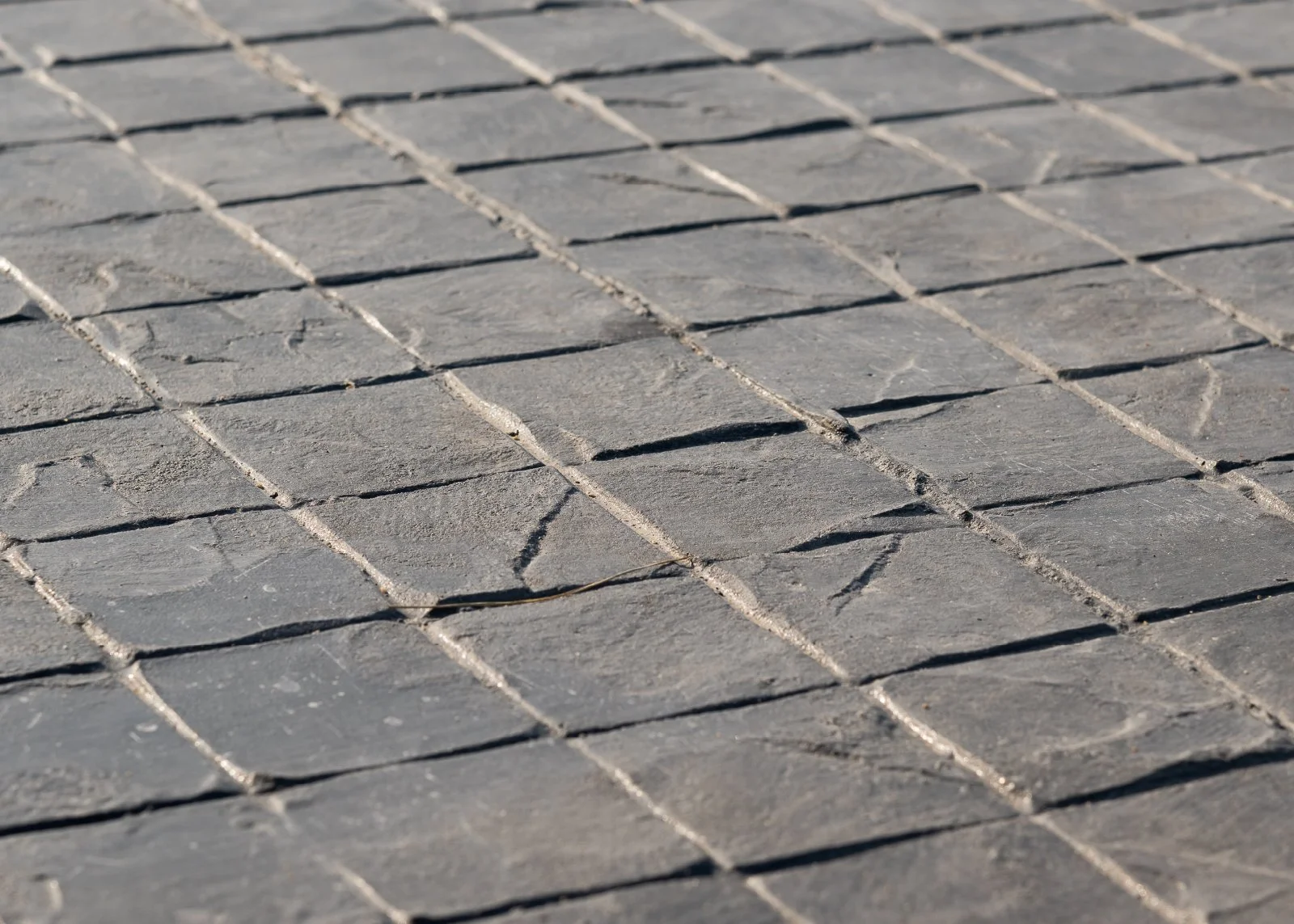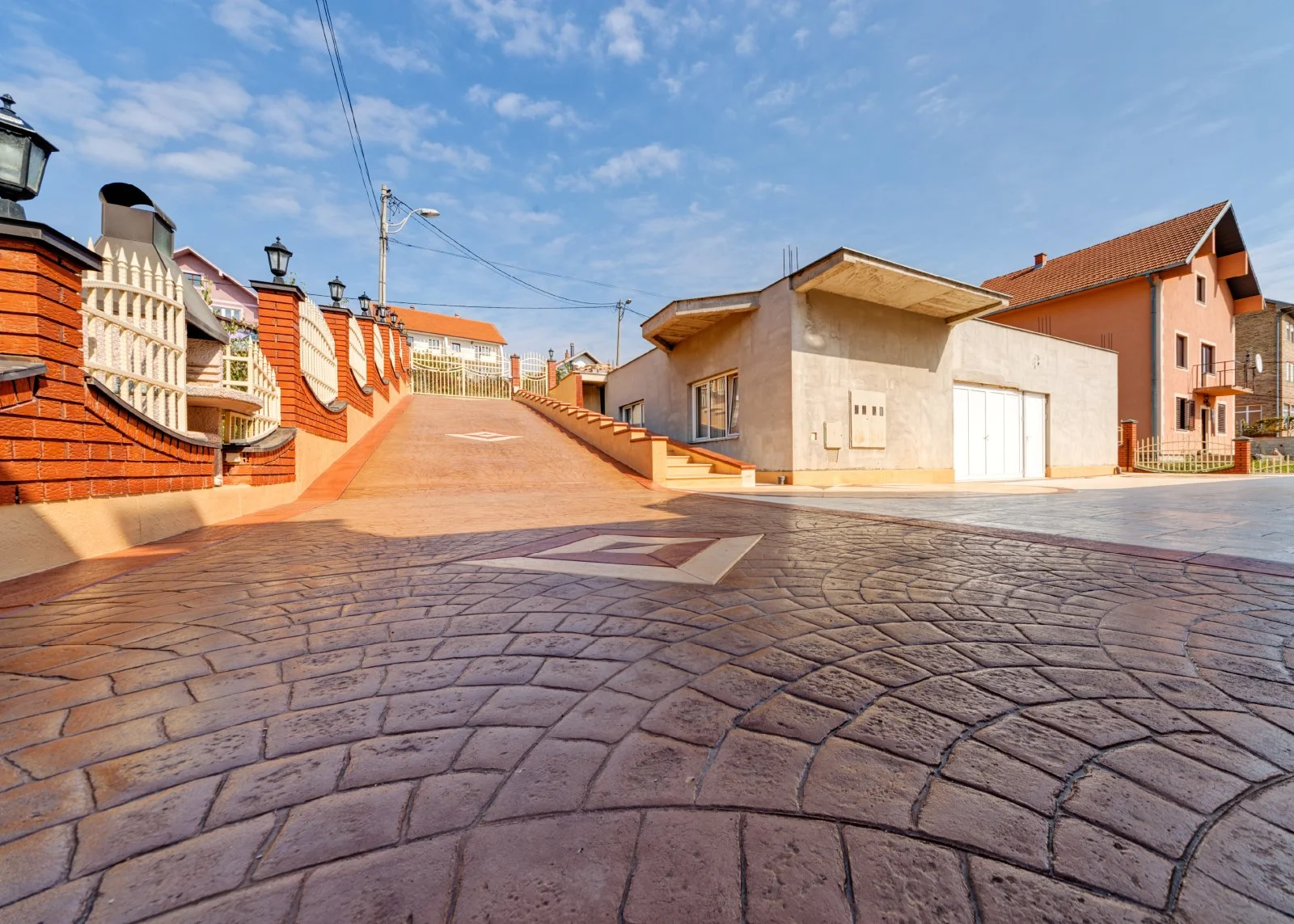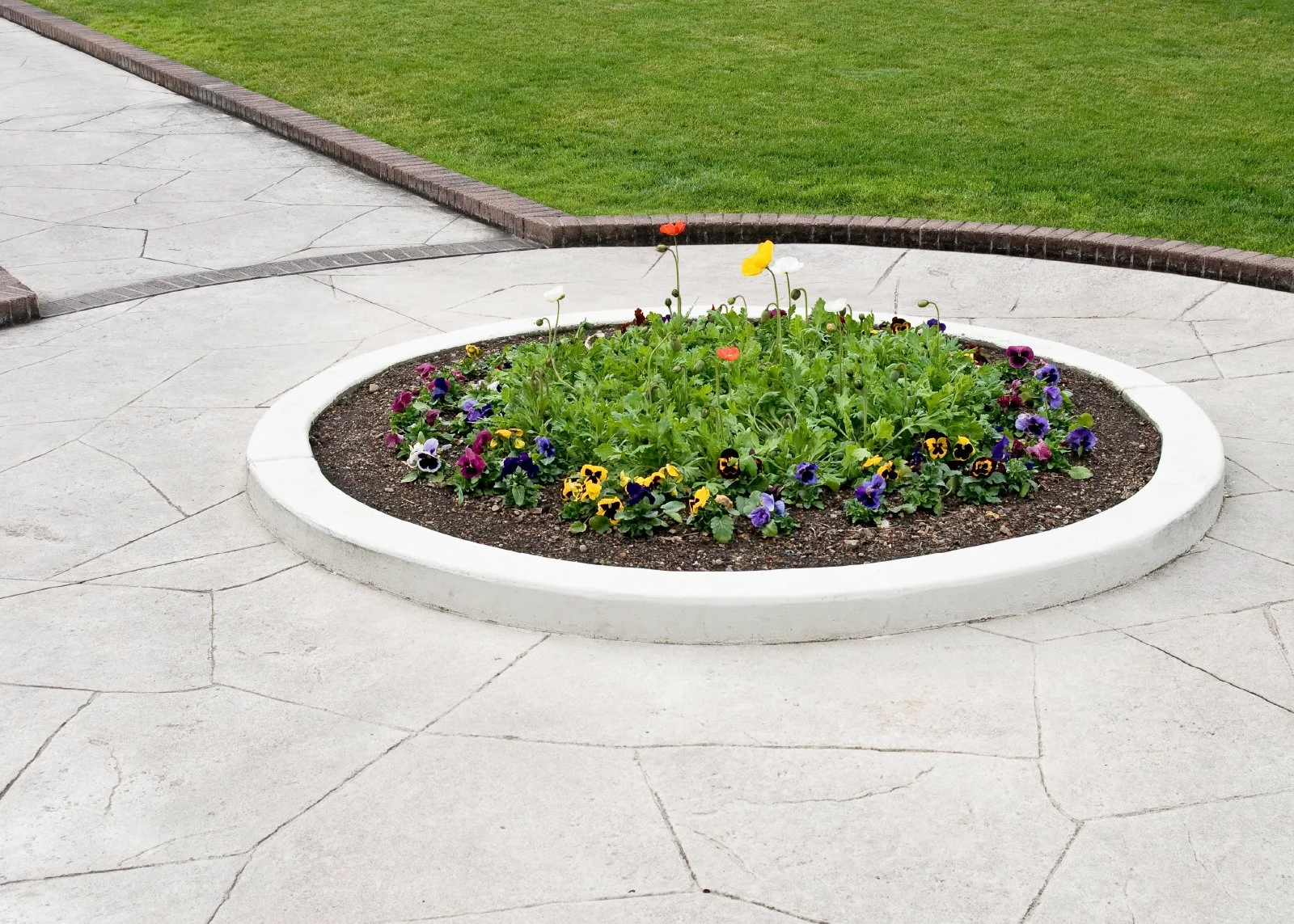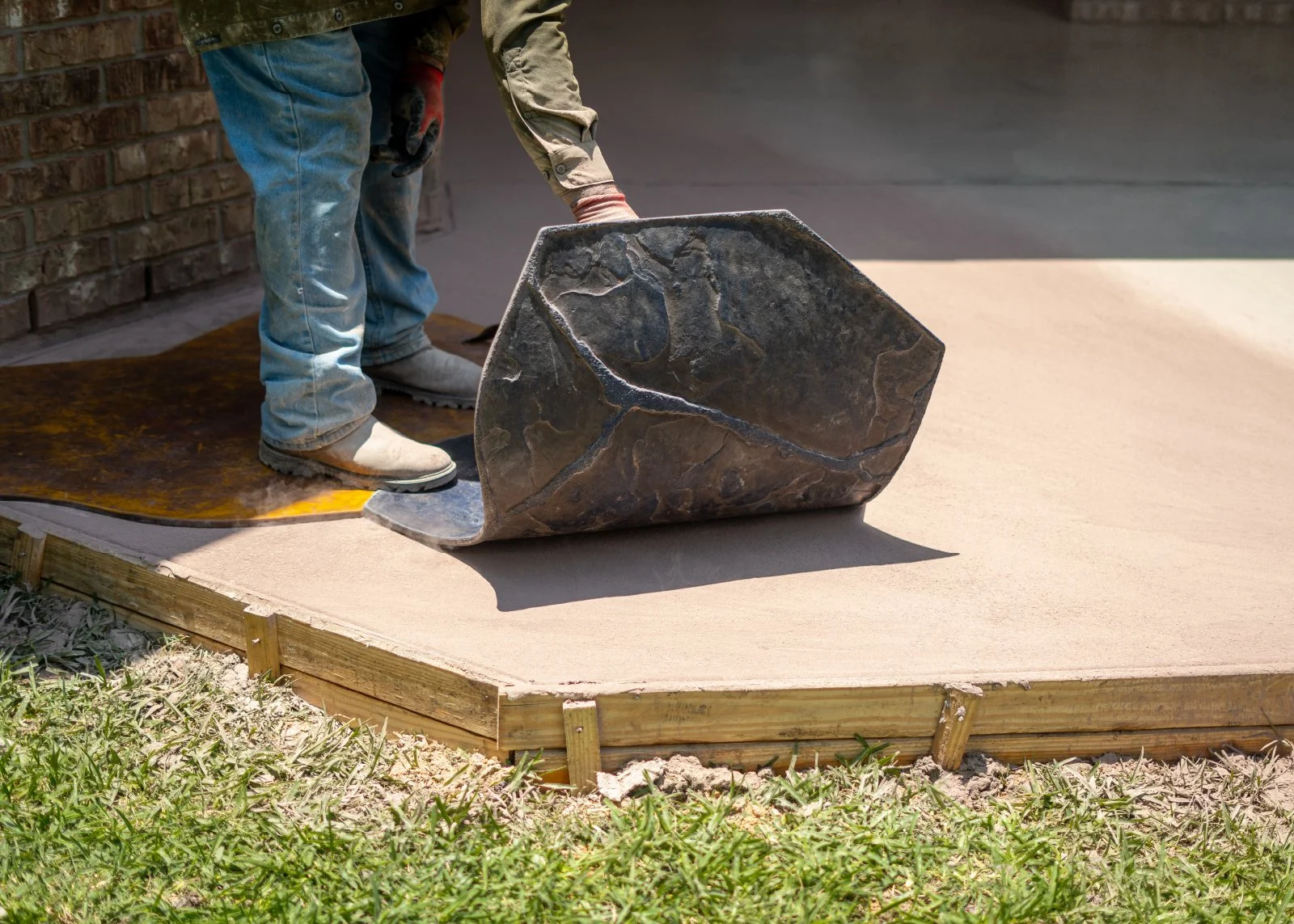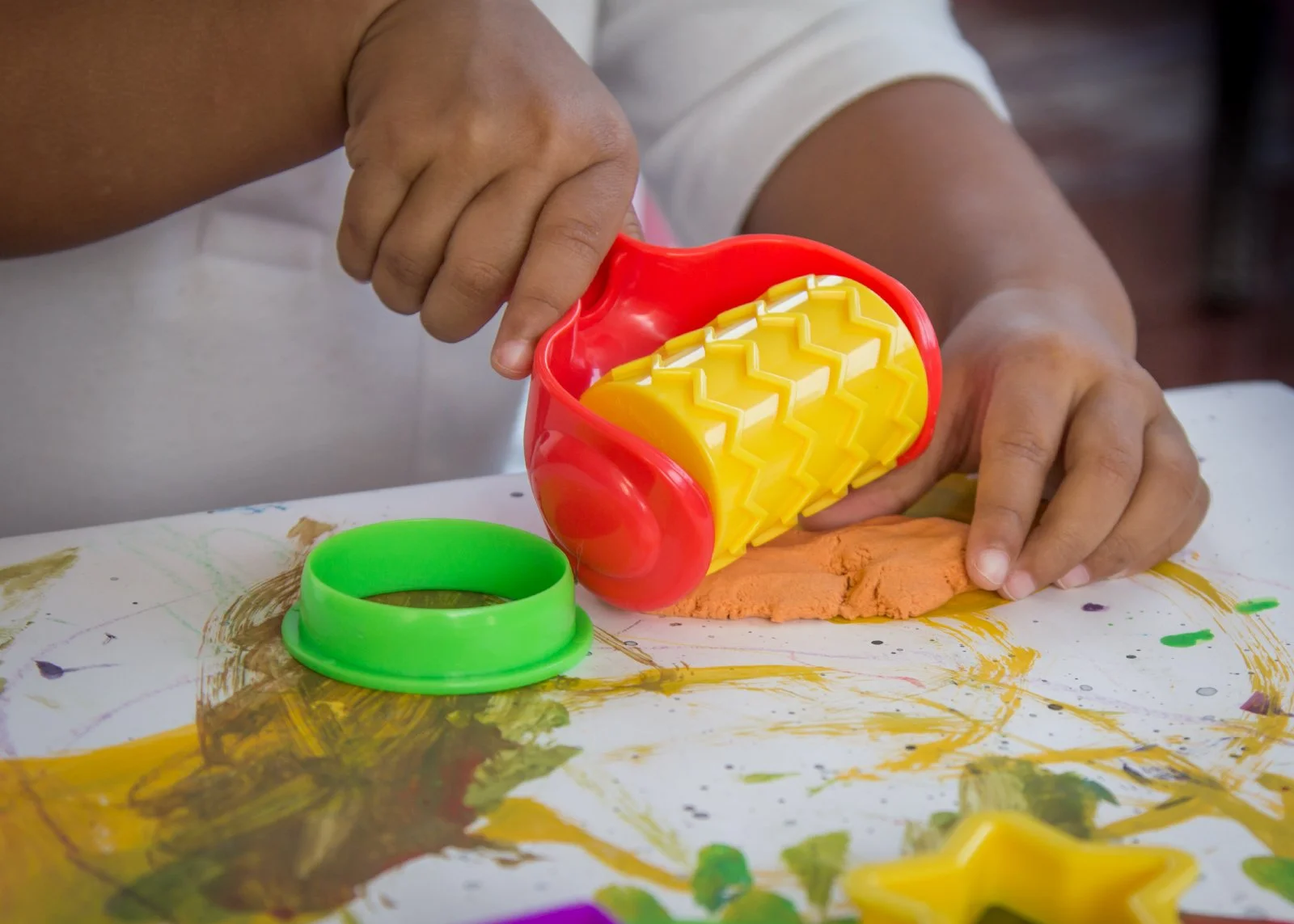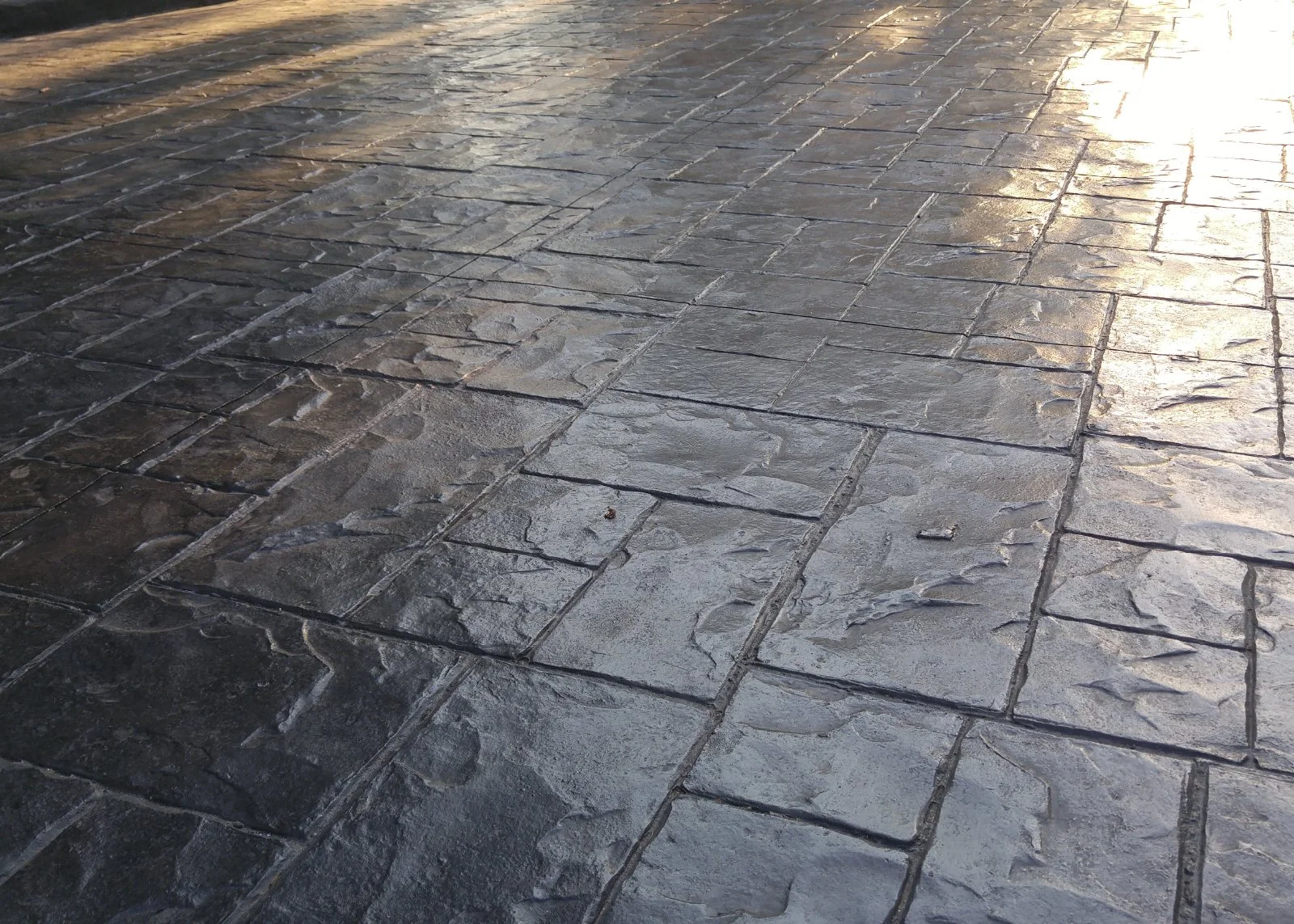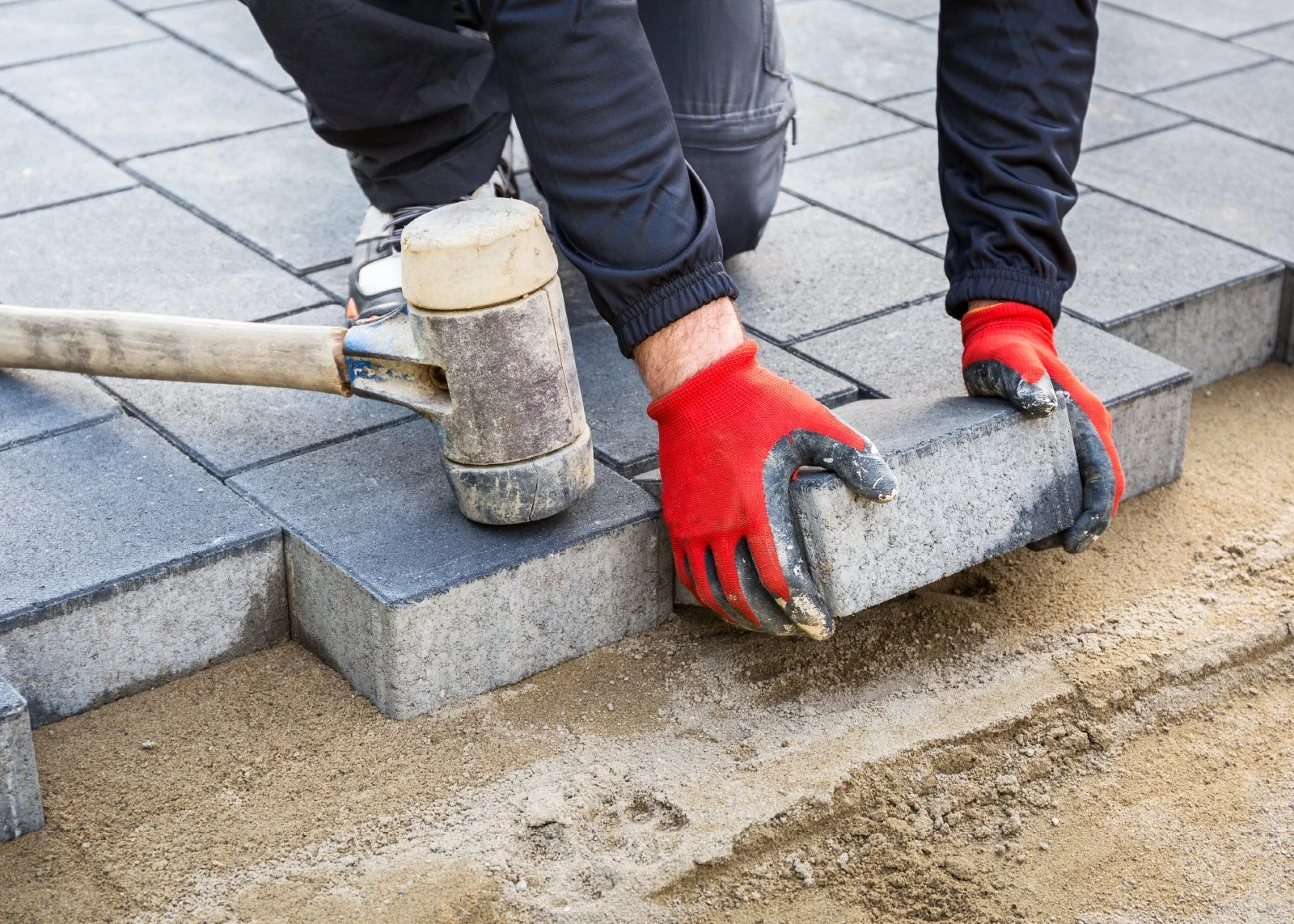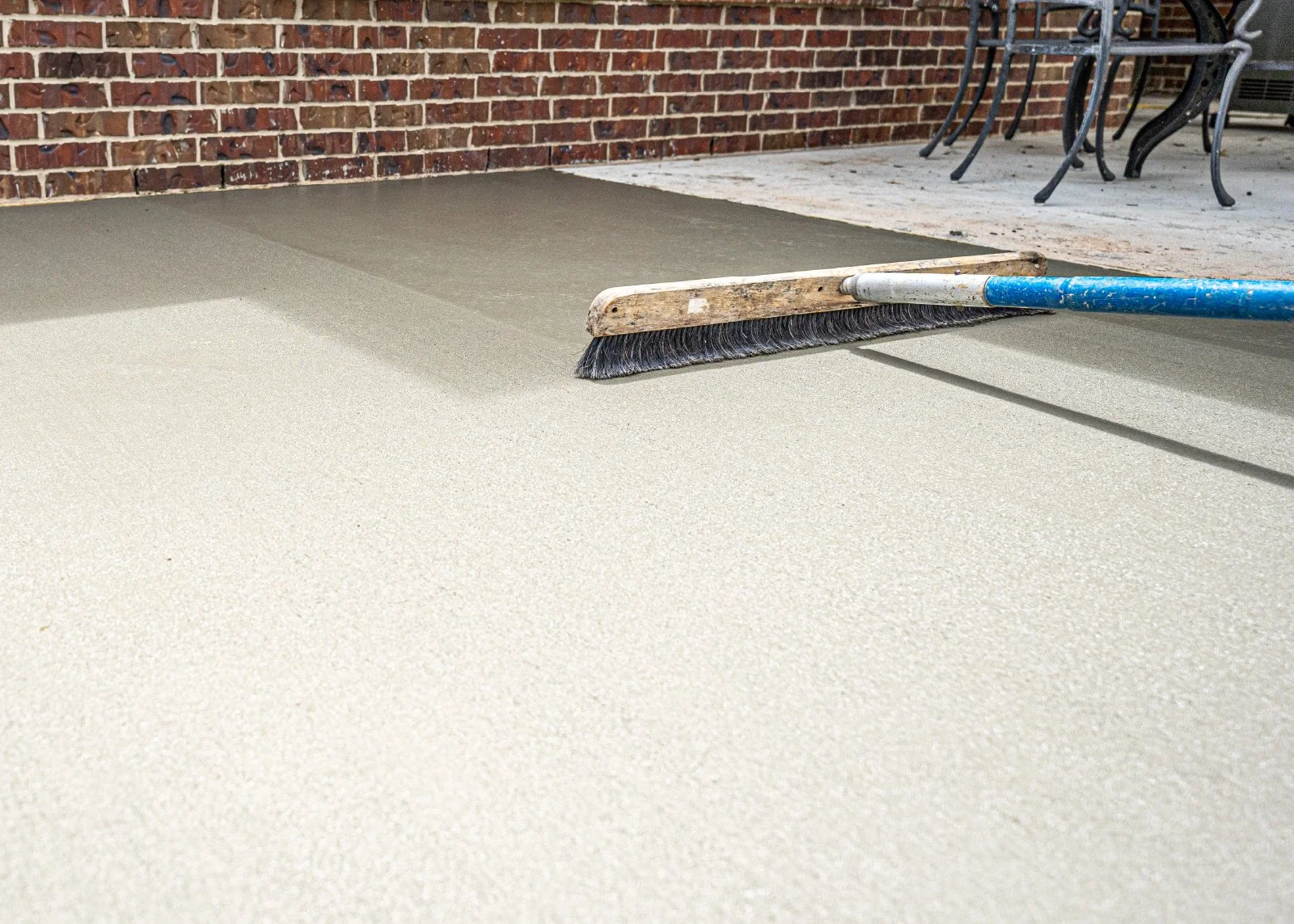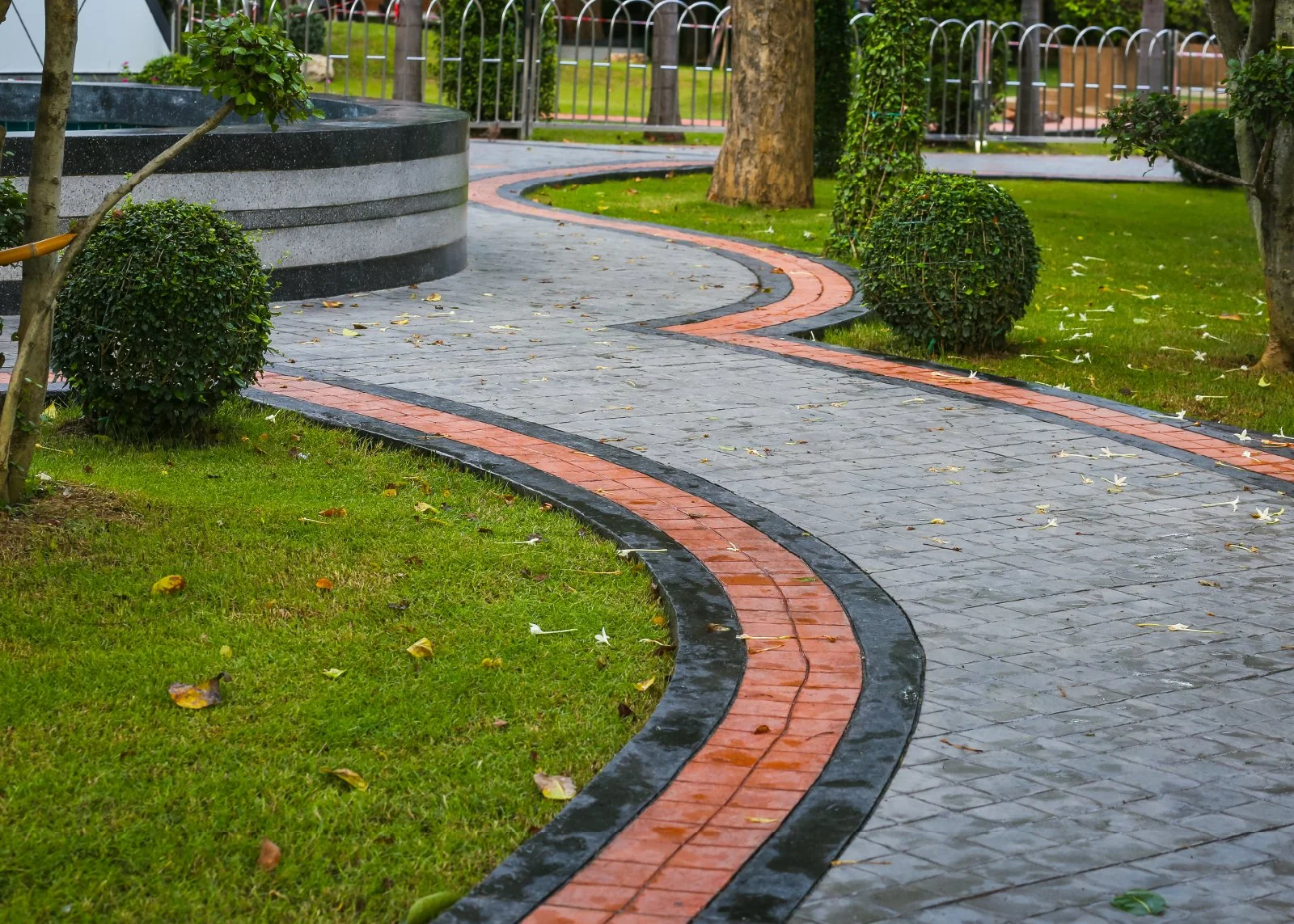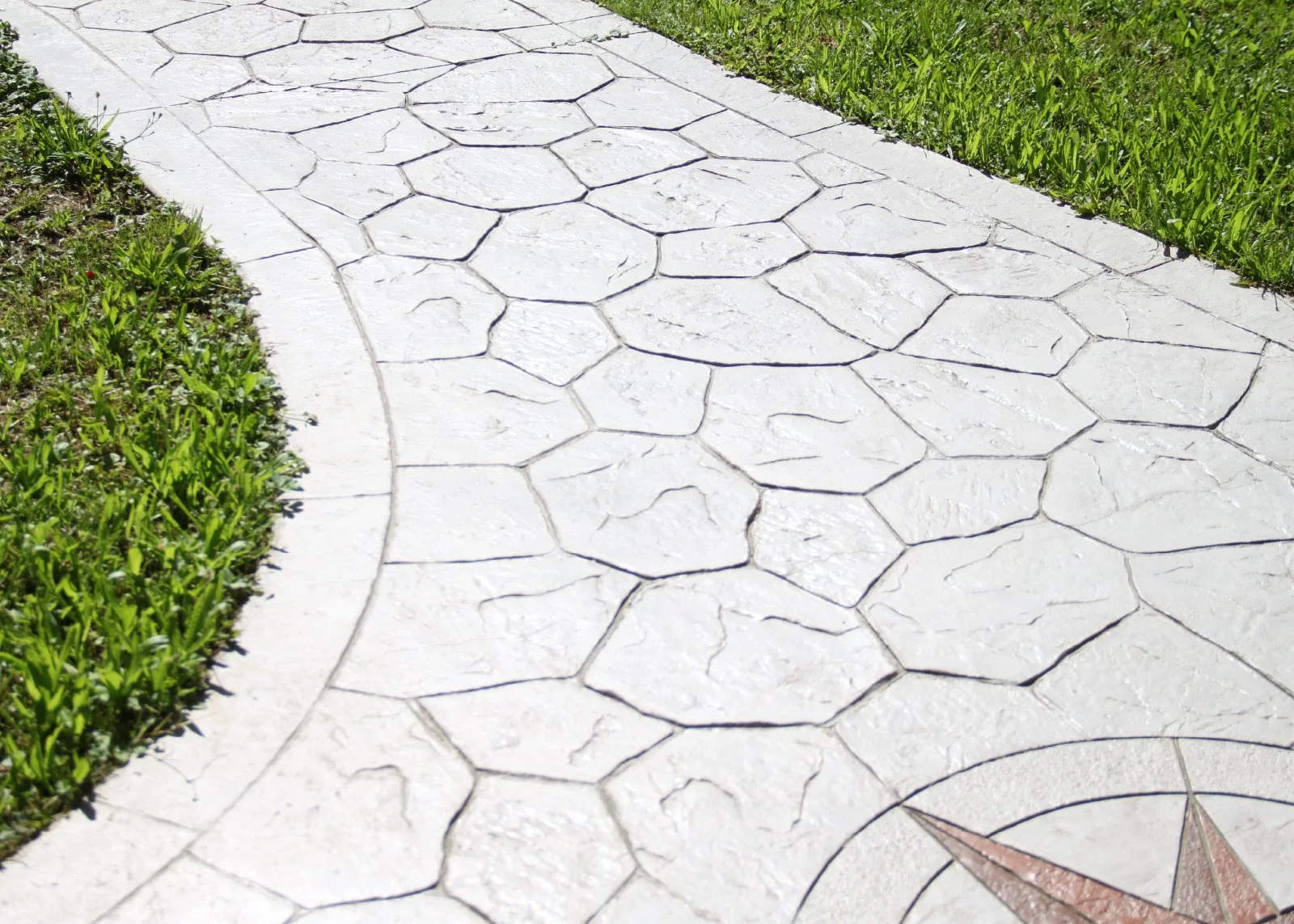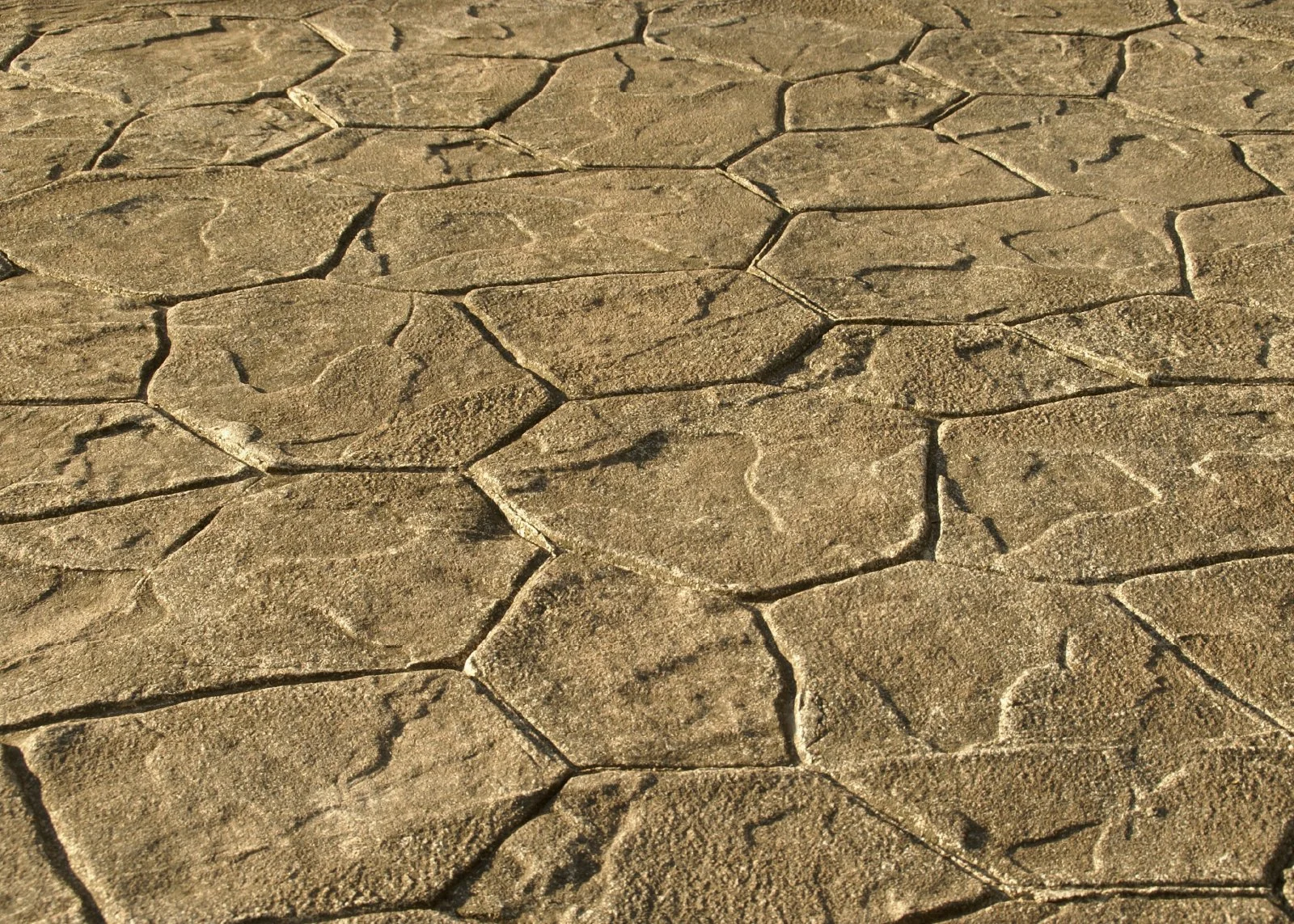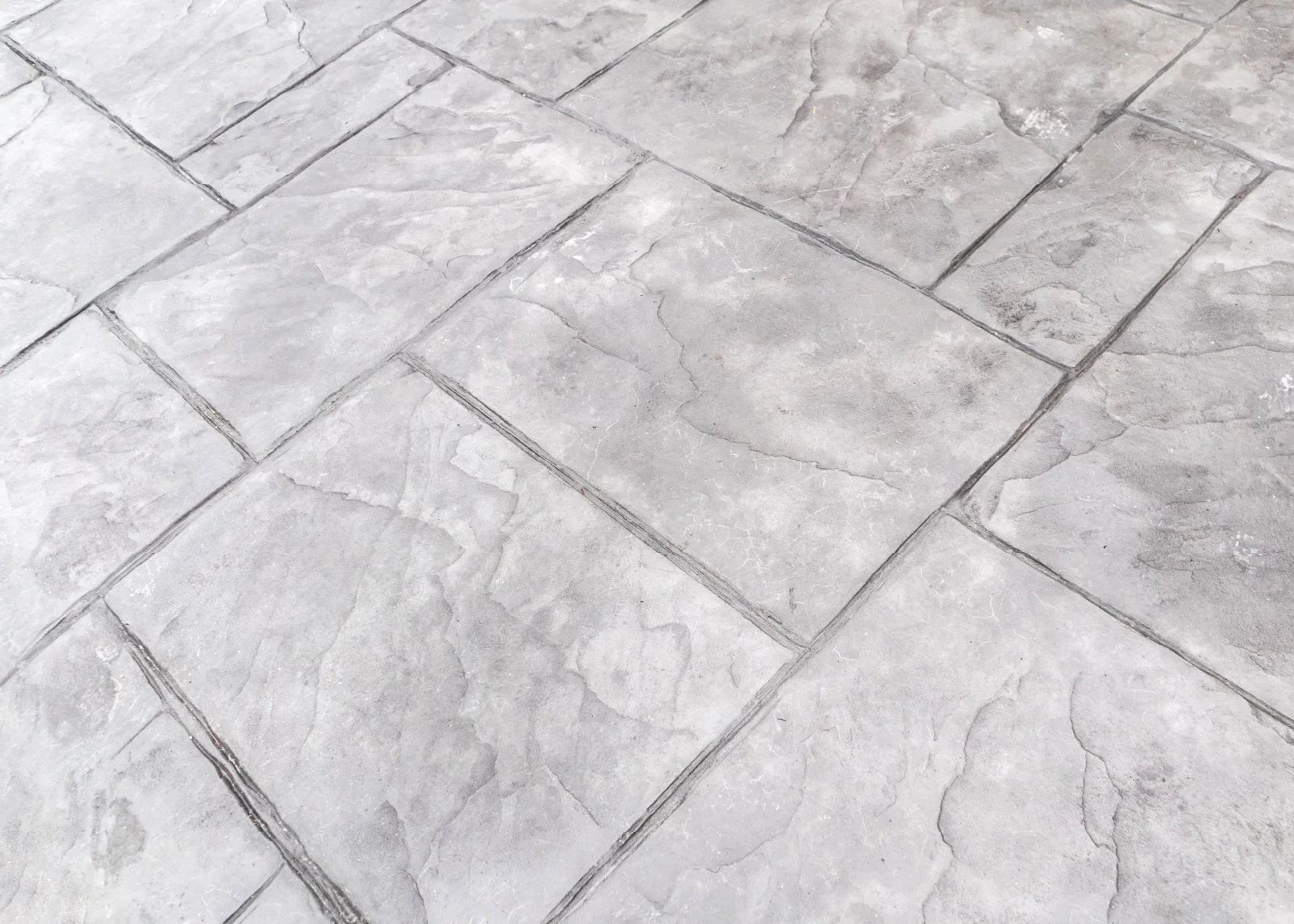Concrete Stamping: FAQs, Pros, and Cons
Close-up view of stamped concrete patio that looks like square slate tiles.
Stamped concrete is an amazing way to turn plain, run-of-the-mill concrete into something spectacular.
In this post, we’re going to cover the biggest FAQs people have about stamped concrete like:
What is stamped concrete?
What is a stamped concrete overlay?
What is a concrete stamp?
What is a concrete stamp roller?
What are the pros and cons of stamped concrete?
What about stamped concrete vs pavers?
Is textured concrete the same thing as stamped concrete?
What stamped concrete colors are available?
Is stamped concrete sealer necessary?
What is the cost of stamped concrete?
For information on 9 different types of concrete stamping patterns and stamped concrete maintenance, check out this resource.
Interested in concrete stamping near you in the Columbia, SC area?
At Boots On Enterprises, we handle almost any kind of commercial and residential paving and hardscaping needs.
Contact us today for a FREE estimate.
Phone: 803-521-4978
Email: bootsonenterprises@gmail.com
Next-day and same-week service is available.
A stamped concrete bridge and driveway made to look like square pavers.
What is stamped concrete?
Stamped concrete is a process of adding a special finish to regular concrete that makes an imprinted pattern or design and texture on the surface of the concrete.
Along with adding color to the concrete or staining the concrete after installation, this stamped pattern can make concrete look like many other more expensive materials like wood, stone, pavers, tile, cobblestone, slate, and more.
A circular stamped concrete walkway with circular flower bed and neatly manicured lawn.
What is a stamped concrete overlay?
If you already have an existing concrete driveway, patio, or walkway and you want to turn it into a stamped concrete surface, you don’t have to tear up the old pavement and completely replace it.
A concrete contractor can apply a new layer of concrete over the current pavement and then stamp and texturize it.
Once the stamping is done, coloring can be applied. Or, colored materials can be added to the wet concrete during mixing. Then a protective sealer can be applied to weatherproof the beautiful new stamped and stained or colored concrete.
Stamped concrete contractors using a flagstone concrete stamp on a patio.
What is a concrete stamp?
Concrete stamping involves using a stamp, similar to the one pictured above. Or, sometimes, a roller is used instead, as we will describe below.
Think about how you used to play with Play Doh® when you were a kid. There were all kinds of molds you could use to make an imprint on the Play Doh®. That’s kind of the same idea as a concrete stamp.
To stamp concrete, you need something that can be pressed down to form the right grooves, texture, and contours to the surface of wet concrete. It can also be called a stamping tool or stamping mat.
Stamps for concrete are often made of rubber, metal, or polyurethane.
A child with a white shirt playing with dough, cookie cutters, and a Play Doh® roller that acts like a concrete roller stamp.
What is a concrete stamp roller?
Rolling stamped concrete is another option when you want to achieve a particular textured appearance for your concrete patio, walkway, or driveway. The roller looks a lot like the Play Doh® roller in the image above. Just like that roller makes a zig-zag impression on the orange dough, a roller can give stamped concrete texture and designs, as well.
If you are using a smaller pattern, or you are just adding a texture to a stamped surface, concrete texture rollers are a great way to do that.
Some concrete texture roller design options include:
Cobblestone
Italian slate texture
Wood grain texture
Weathered flagstone texture
And more…
Concrete texture roller stamps are available on Amazon and at home improvement stores, as well. Professional concrete stampers have their own devices they use.
Slate-look stamped concrete driveway that is stained dark gray, textured, and sealed to look glossy.
What are the pros and cons of stamped concrete?
Concrete stamping, like anything else, has pros and cons. We’ll discuss the advantages and disadvantages of using stamped concrete designs for your hardscaping.
Pros of stamped concrete
Very durable
Beautiful
Realistic, luxurious appearance - wood, stone, brick patterns
Low-maintenance
Environmentally friendly
No joints so no weed growth (unless the concrete cracks)
Customizable upfront with many designs, colors, and options
Can be refinished later with different stain and sealant for new looks
Much less expensive than real wood, stone, tile, brick, etc…
Cons of stamped concrete
Costs more than regular concrete
Takes longer to dry than normal concrete
Needs to be sealed every few years
Not as durable as natural stone
Not as slip-resistant as natural stone
Can crack and need repair
Before you commit to stamped concrete driveways, patios, pool decks, or walkways — it’s good to think through whether this material is the best option for you. Of course, if you have questions, you can always check with the pros and let them weigh in on your particular project and design needs.
Gloved hands of a paving contractor installing concrete paver blocks with a rubber hammer on a sand base.
What about stamped concrete vs pavers?
Some people prefer the “real thing” to stamped concrete. Above, we went over the pros and cons of going the stamped and stained concrete route.
Now let’s talk about the pros and cons of pavers vs. stamped concrete.
Pros of pavers vs stamped concrete
Pavers are:
More flexible with design options
Able to withstand heavier loads
Less likely to crack
Able to drain better than concrete
Ready for use immediately after installation
Considered more valuable for resale of most property
Cons of pavers vs stamped concrete
Pavers may:
Be generally more expensive than stamped concrete
Need the base layer of dirt/sand re-leveled if they shift over time
Need re-sanding and maintenance of joint sand
Have issues with weed growth
Be tough to use for very curvy designs
Have a less uniform look
A concrete installer completing a broom finish on a new concrete patio near a brick home.
Is textured concrete the same thing as stamped concrete?
These two things are definitely related. And they both do involve adding texture. But they are not identical or interchangeable.
You can have textured concrete without stamped concrete patterns. Textured concrete is basically any concrete with a finish that isn’t smooth.
Textured concrete includes finishes like:
Brushed
Rock salt-pitted
Trowel
And more…
Stamped concrete involves stamps or rollers with imprinted designs on them. Sometimes, they also have textural elements, as well. Like the texture involved in a leaf imprint. Or the sharp chunky marks of stamped concrete that looks like slate. Or the ridges that make stamped concrete look like wood.
Stamped concrete walkway with three different colors leading to a fountain in a park.
What stamped concrete colors are available?
Colored stamped concrete comes in an amazing assortment of colors.
Earth and neutral tones: browns, beiges, creams
Warm tones: terracotta, reds, yellows, and oranges
Cool tones: blues, greens, purples
Black or white
Custom colors
You can opt for just one color, or several completely separate colors, like in the picture above. Or your contractor might use a variety of colors layered and mixed together to create a breathtaking, artistic effect.
Light gray slate pattern stamped concrete walkway with dark red compass rose.
Is stamped concrete sealer necessary?
Is sealing stamped concrete a non-negotiable? Well, it’s not absolutely necessary. But sealer for stamped concrete provides a number of benefits that helps to improve the material’s durability, beauty, and lifespan.
Sealant provides
Protection from stains and chemicals
Weatherproofing
Color enhancement
UV protection
Greater strength
Lower maintenance and easier cleaning
Boosted longevity
So, while sealant isn’t required, it is definitely something we recommend for our concrete whether it is plain concrete, stamped concrete, or stained stamped concrete.
Exterior decorative stamped cement pavement that looks like natural stone with a slanted view as the sun begins to go down.
What is the cost of stamped concrete?
Trying to figure out, “How much is stamped concrete?” We’ve got you.
Stamped concrete prices tend to range from about $6-$12 per square foot in 2023 in the Columbia, SC area. This may be different from other areas of the country.
How much does stamped concrete cost with stain?
If you are having your project stamped and stained in this area, the cost will likely range from $7-$13 per square foot.
How much does sealing stamped and stained concrete cost?
Adding sealing would usually be about $0.5-$1 per square foot.
Of course, the more complex the project is, and depending on a variety of factors, that can change.
Factors involved in the price of stamped concrete include
How large the project is
How complex the stamp concrete patterns are
The current market price of materials needed
Whether you are having color or not and how complex the colors are
The number of stamped concrete steps involved
Whether you have sealant applied and what type you want to use
The location of the project in relation to a contractor’s service area
The region of the country you live in
The accessibility of the project
The time of year
How busy contractors are
Whether you are having other work done, as well
Like with anything else, simple stamp concrete designs are probably going to cost less than complicated ones. The more work and expertise that is needed for a job, the more it will cost.
If you want something done during a busy season, the law of supply and demand will likely mean you’ll pay more during that time.
For an accurate estimate of how much your stamped concrete pavement will cost, check on contractors who do stamped/stamp concrete near you. Most will give you a free quote.
A stamp concrete floor textured and painted to look like slate pavers.
Ready to talk with stamped concrete contractors near you in South Carolina?
At Boots On Enterprises, we can handle all of your paving and hardscaping needs. We’re also happy to take care of landscaping and lawn care, as well.
So if you’re looking for a stamped concrete contractor near you here in the Lexington or Richland County areas of the Midlands of SC, we’re here and ready to serve you.
Contact us today for a FREE estimate.
Phone: 803-521-4978
Email: bootsonenterprises@gmail.com
Next-day and same-week service is available.

